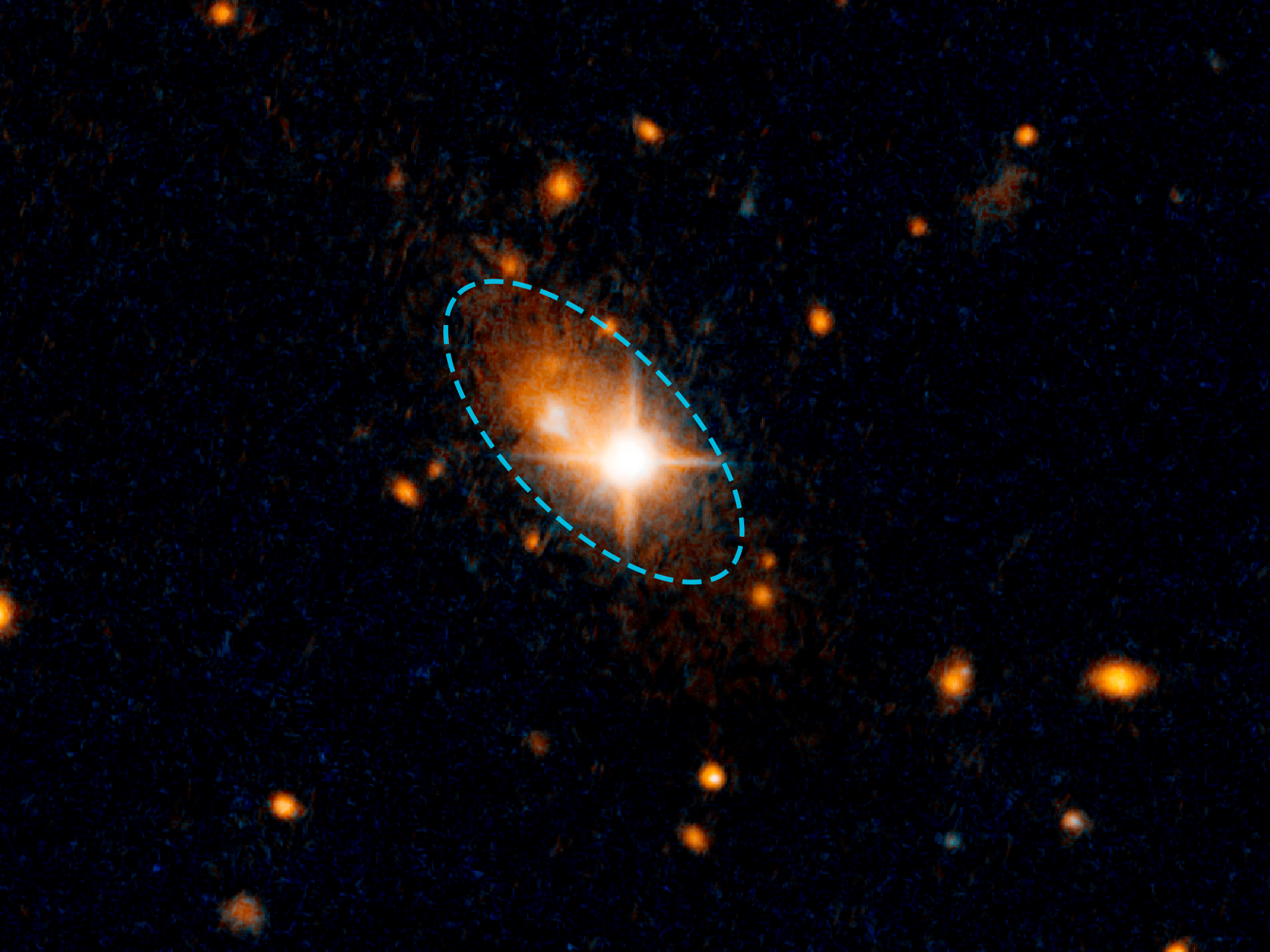A team of researchers including UMBC’s Eileen Meyer and Markos Georganopoulos have found strong evidence of a striking astrophysical phenomenon: a supermassive black hole traveling away from the center of its galaxy at an incredibly rapid pace.
A scenario like this has been predicted for some time. “The theory is great, but we’ve got to have some observations to see if our simulations are correct,” says Meyer, assistant professor of physics. Those observations are now in hand, with copious lines of evidence all supporting the team’s explanation.
“There have been previous cases of systems like this,” says Georganopoulos, associate professor of physics, “but ours is the most solid case.” Meyer adds, “It’s the only one I can think of where all the little pieces of evidence line up in favor of this scenario very specifically.”
When two galaxies with black holes at their centers merge, gravitational forces pull the black holes to the center of the newly-formed galaxy. The black holes spin around each other, gradually slowing down. This process releases gravitational waves—ripples in the fabric of spacetime that travel outward at the speed of light. Depending on the relative rotational speeds of the two original black holes, once they merge the new black hole may be kicked out of the galaxy’s center by the gravitational waves.
Video produced by NASA, accessed on Hubble’s site here.
Data collected by the Hubble Space Telescope and other sources confirm that the black hole’s speed and position—approximately 4.8 million miles per hour, offset from the center of its galaxy—are consistent with the team’s explanation that the black hole has been powerfully ejected from the galaxy by the force of gravitational waves.
First author Marco Chiaberge, research scientist at the Space Telescope Science Institute at Johns Hopkins University, approached Meyer and Georganopoulos almost two years ago to help interpret the surprising data. Georganopoulos shares, “For me, the most exciting thing was to go from the raw data to building up a scenario—gradually realizing that the other scenarios are very implausible.”
Although alternative explanations are unlikely, the team still wants to collect additional observations to further confirm their interpretation. They’re submitting a proposal for time on the Atacama Large Millimeter Array (ALMA), a powerful telescope in Chile that could help them answer remaining questions.
“At the same time that it creates the opportunity to solidify our model, it’s also an opportunity to falsify it,” says Georganopoulos, of the possible opportunity to use the array in Chile, and the importance of remaining open to new interpretations of the data.
Either way, it will be exciting research. “Even if it doesn’t turn out the way we’re expecting,” says Meyer, “this is still a strange and remarkable system that needs to be studied.”
See the NASA press release and other media coverage of this new research on Deep Astronomy (video), New Scientist, Washington Post, Science, Laboratory News, Sky and Telescope, TrendinTech, The Daily Galaxy, Sputnik International, and others.
Image: NASA’s Hubble Telescope collected this image of a bright quasar, a proxy for the presence of a black hole, far from the galaxy’s center.

